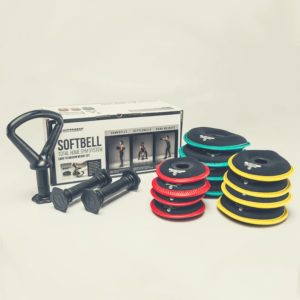We’ve all been there regardless of age. Sometimes your joints hurt if you performed a move wrong, you had an old injury, or you’re suffering from a condition like arthritis.
However, you don’t need to suffer from pain.
There are many joint protection techniques that you can practice in the comfort of your own home to alleviate and prevent further joint pain.
Joint Pain Causes
Anyone at any age can suffer from joint pain.
Some people may have joint conditions that cause them daily pain like arthritis, gout, fibromyalgia, lupus, Lyme disease, Leukemia, hypothyroidism, Rickets, or Sarcoidosis.
These conditions are diagnosed by a doctor and may come with their own set of techniques or physical therapy movements that can alleviate pain.
However, for the purposes of this article, we’ll focus on joint pain caused by exercise or improper exercise.
There are a few ways you can acquire joint pain from improper exercise or techniques.
Bursitis
One condition that causes pain is called bursitis. Bursitis affects the bursae sacs that cushion your bones, tendons, and muscles and inflames them.
It commonly occurs in your shoulders, elbows, hips, and knees. This condition happens when joints are performing repetitive motions or using too much pressure on the joint.
You can get bursitis through various activities like gardening, skiing, tennis, painting, golfing, shoveling, carpentry, or scrubbing.
You can even get it by improper posture while sitting or standing for long periods of time or a failure to stretch before exercise.
Tendinitis
Another condition called tendinitis affects tendons through inflammation. Like bursitis, tendinitis happens because of repetitive motions and stress.
Tendinitis commonly occurs in the shoulders, elbows, knees, wrists, and heels. However, it can occur in any tendon.
Many people that work certain jobs are at risk for tendinitis and those who play certain sports like golf, bowling, swimming, tennis, basketball, baseball, and runners.
These next two issues are more on the extreme side but can happen if proper techniques aren’t used or an injury occurs.
Sprains
Sprains stretch or tear the ligament. Sprains usually occur in the ankle. Depending on the severity, you may need surgery. There are a few instances where you might get a sprain.
Ankle sprains happen when you walk or exercise on uneven surfaces or poor landing after jumping. Knee sprains happen when you pivot the knee during activities.
For example, if you turn the wrong way or too quickly while turning. You’ll see a lot of basketball and football players run into this issue and sometimes end up tearing their ACL in the process.
Wrist sprains happen most often when you fall. You tend to use your hands and wrists to break the fall and outstretch your hand causing a sprain.
Thumb sprains happen when you play certain sports like skiing or tennis. You overextend your thumb causing a sprain.
Dislocations
Dislocations are injuries to the joint. These types of joint injuries are severe and temporarily deforms and immobilize the joint.
You can get a dislocation anywhere, but the most common areas are the shoulders, fingers, knees, elbows, and hips.
Those that practice more contact sports like football, hockey, gymnastics, basketball, and volleyball tend to get dislocations.
However, they do sometimes happen with falls or motor vehicle accidents.
The good news with most joint pain conditions is that they are not only treatable but they’re preventable too.

Tips to Avoid Joint Pain
There are ways you can avoid joint pain in exercises.
Some ways include doing certain exercises that avoid pressure or strain on the joints and others include general tips that one should do regardless of age or fitness level.
When we suffer from joint pain, we often don’t think of the everyday life choices we make. These can range from poor nutrition to a job that requires us to sit or stand frequently.
By making small changes, you can see an improvement in your joints or a reduction in your pain.
1. Choose the Right Shoes
This sounds silly but did you know that some shoes can negatively affect your joints? High heel shoes at just three inches put stress on your feet and knees.
Rounded and squared shoes at the toe area allow for flexibility. You also want a rubber sole for more cushion and flexibility where the ball of your foot is.
2. Move Around
Avoid staying in one position for long periods of time. It fatigues your muscles and puts pressure on the joints to hold your weight or position.
Taking a break every 30 minutes or so to move around or stretch helps prevent aches, pains, strains, and stiffness.
3. Use Your Strongest Joints
Use your stronger joints and muscles to take the stress off smaller and weaker joints.
When you need to lift or carry items, use your arms instead of your hands or the palms of your hands. Keep items close to your body to lessen stress on the joints.
If possible, slide or push items over lifting them.
4. Eat A Healthy Diet
It sounds cliché but it’s true. Research has found that eating vegetables like romaine lettuce, broccoli, spinach, or kale can lessen bone loss as you age.
These vegetables are rich in calcium. Calcium is ideal for building strong and healthy bones.
In addition to vegetables, milk, yogurt, salmon, and calcium supplements all help to keep bones strong. According to research, vitamin C can help slow osteoarthritis too.
5. Consume Less Caffeine
While you may feel like you need caffeine to make it through your day, limit your intake.
A cup of coffee per day isn’t unhealthy but multiple cups or extremely high amounts of caffeine can weaken bones.
6. Ditch the Nicotine
Cigarettes are awful for your health in various ways.
The most common reasons talked about involve your lungs, but did you know it affects your bones too?
Smokers have a higher risk of fractures than nonsmokers. It also reduces bone mass.
7. Lose Weight
Weight loss can help improve your health in many ways. You’ll not only look better but feel better too. Each pound you put on causes four times more stress on your knees.
You don’t have to lose a lot of weight to reap the benefits.
Research has found that losing just 11 pounds can improve joint health and reduce your risk for osteoarthritis by up to 50%.
Exercise Tips
There are many types of exercise you can perform to improve and protect your joints. Many of them don’t require the use of a gym and can be done in everyday life.
Some are even free or utilize what you already have on hand.
1. Switch It Up
Only performing high-impact exercises like running or plyometrics are great for the body. However, they’re rough on the joints, especially if you don’t do anything else.
Try switching up with low-impact exercises like walking, swimming, or biking to give your joints a break.
2. Practice Strength-Building Exercises
Strength exercises help maintain and build joint health. You don’t want to do these exercises daily to avoid added stress to the muscles and joints.
You can do these exercises a few days per week and you’ll want to focus on your core, arms, legs, and back.
3. Practice Stretching-Related Exercises
Warmups before and after exercising is a must. It helps warm up your joints and muscles so they can perform the movement easier.
On days you don’t work out certain muscle groups, you still should stretch them like your arms, legs, back, and core.
If you’re not someone big on working out, you can benefit from types of exercise like Yoga or Pilates. These stretching-related exercises help improve your posture, flexibility, and health.
4. Get Range of Motion
Range of motion exercises helps the joints improve their health. These exercises relieve stiffness and allow for better movement in the joints.
They are as simple as rolling your shoulders or raising your arms over your head. You can also practice these exercises daily.
5. Get Outside
You don’t need to stick with an indoor routine. Everyday activities like gardening, lawn mowing, or dog walking can help.
Even body awareness exercises like Tai Chi can improve balance, posture, and coordination, and prevent falls.

Four Joint Protection Techniques
There are a few basic joint protection techniques or exercises you can try to strengthen your joints.
1. Pushup
One basic exercise is the pushup. This exercise helps protect your shoulders and elbows. To perform a pushup, start on the ground in a plank position.
Keep your hands shoulder-width apart. Your body should be in a straight line. Lower your chest to the floor as low as you can go.
Then extend your arms and push back to the starting position. If the standard pushup is too difficult, try to use your knees or pushup on a wall or bar.
2. Bodyweight Squat
The bodyweight squat is great for the knees, ankles, and hips. To perform a bodyweight squat, start standing in front of a bench or chair with your feet shoulder-width apart.
Lower your body to the seat of the bench or chair and touch it lightly. Then return to the standing position. Make sure you perform this exercise properly to avoid injury.
Ensure that your knees never extend past your toes and keep your knees in line with your feet.
3. Bird Dog
The plank limb lift or “bird dog” trains your core, glutes, and back muscles. This exercise stabilizes the whole body and allows for corrects body movements and control.
The bird dog is great for those with hypermobility or lower back issues. The bird dog has many variations as well if you’re finding one version too hard, you can try another.
To do a bird dog, get on all fours. Extend your opposite hand and foot from the body. Keep your shoulders and hips square to the floor and reach your fingertips forward and foot back.
Hold then bring the limbs in with your elbows toward your knee.
Some tips to perform the movement correctly include keeping your spine neutral, don’t lift your leg too high, don’t sink your chest toward the floor, draw your shoulder blades back and away from your ears, and move slowly.
4. Low Lunges
Low lunges are ideal for those who do a lot of sitting around. Sitting too much can cause tight hip flexors.
Lunges open up the hips. You can do this as part of your routine or as a cool-down stretch. Start with kneeling on a mat.
Step one foot forward with your knee bent. The other leg extended behind you.
Your front knee shouldn’t be bent more than 90-degrees. If it is, widen your legs until it’s less than 90-degrees.
Square off your hips and press forward until you feel the stretch. It’s important to note that you’re not feeling straight pain.
If you feel pain, don’t press as hard. You can reach overhead with your arms for a deeper stretch. Hold the position for 30 seconds then switch sides.
These joint protection techniques can be done virtually anywhere and anytime, even on your lunch break!
Final Thoughts
Joint pain can strike us at any age or at any time if we aren’t taking proper care of ourselves.
We sometimes get caught up in the hustle and bustle of life and it can interfere with our lifestyle and cause health problems.
However, there are joint protection techniques you can practice to protect the joints or alleviate pain.
Some techniques you may already have in your everyday routine. The great news is that most are free and take up only a little of your time.



